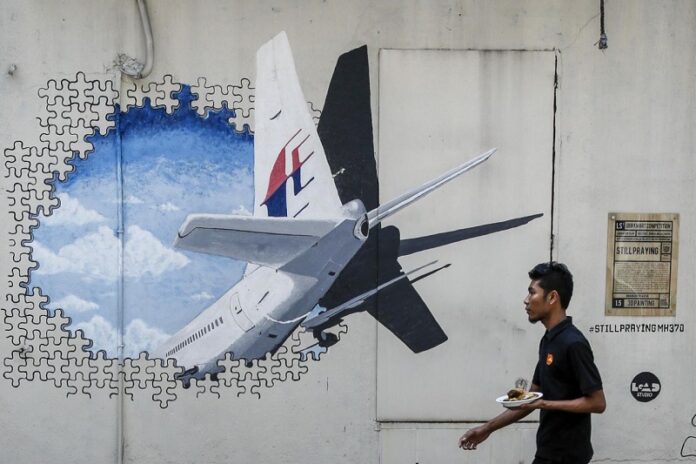
CANBERRA, Australia — Relatives of some of the 239 passengers and crew on missing Malaysia Airlines Flight 370 called Monday for more of its possible debris to be examined to define a new search area.
Malaysia, China and Australia agreed in July that the search in the southern Indian Ocean would be suspended after the current 120,000-square kilometer (46,000-square mile) expanse has been thoroughly examined with deep sea sonar equipment in the absence of credible new evidence that identified the plane’s location.
Eight relatives of lost passengers who met with Australian officials coordinating the search on behalf of Malaysia expressed frustration that they were not given a definition of what constituted credible new evidence that would result in a continuation of the search.
American wreckage hunter Blaine Gibson attended the meeting at the Australian Transport Safety Bureau headquarters with the relatives from Malaysia, China, Australia and Indonesia and handed over to investigators five pieces of potential debris that he found on beaches in Madagascar. Two of the pieces were burnt, which could indicate a disastrous fire on board, he said.
Gibson previously found a panel from Flight 370 in Mozambique. Malaysia has yet to collect other potential debris that Blaine has found washed up on Madagascar since June and handed to authorities there.
“I hope that the search will go on and in my amateur opinion this constitutes new, credible evidence that justifies continuing the search,” Gibson told reporters of his unconfirmed debris find.
Some confirmed pieces of debris have washed ashore in the western Indian Ocean, and the families believe other items yet to be examined may be clues to the plane’s location.
Grace Nathan, a Malaysian whose mother was on the Boeing 777 that vanished during a flight from Kuala Lumpur, Malaysia, to Beijing on March 8, 2014, said governments should be coordinating a search for debris and using drift modeling to define a new area to search after the current search is to be completed in December.
“We want to call on the three nations – Australia, China and Malaysia – to make a concerted effort to go out and look for this credible new information,” Nathan said.
“It’s very impressive that one private individual citizen, Blaine Alan Gibson, has managed to find up to 15 pieces of aircraft debris and we hope that these three nations do more than just hope by fluke people find more debris,” she added.
The Australian Transport Safety Bureau confirmed in a statement that it had received debris from Gibson and was seeking advice from Malaysia on how Australia should proceed.
Jennifer Chong, a Melbourne-based Malaysian-Australian dual citizen whose husband was aboard Flight 370, wondered why Malaysia had not sent diplomats to the five-hour meeting with Australian search officials. China and Indonesia both sent diplomats to support their citizens.
Oceanographers are analyzing the first piece of wreckage found, a wing flap known as a flaperon that washed up on Reunion Island off the African coast in July last year – 16 months after the plane went missing – in the hope of narrowing a possible next area adjoining the current search boundary through drift modeling.
A wing flap found on Tanzania is also being examined at Australian Transport Safety Bureau headquarters for clues. Search officials expect more Flight 370 wreckage to wash up in the months ahead.
Sheryl Keen, chairwoman of Air Crash Support Group, which is supporting the relatives during their week in Australia, called on Malaysia to collect the debris found by Gibson on Madagascar and to consider handing responsibility for the search to Australia.
Story: Rod McGuirk














































